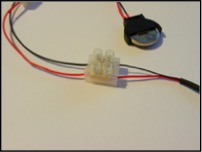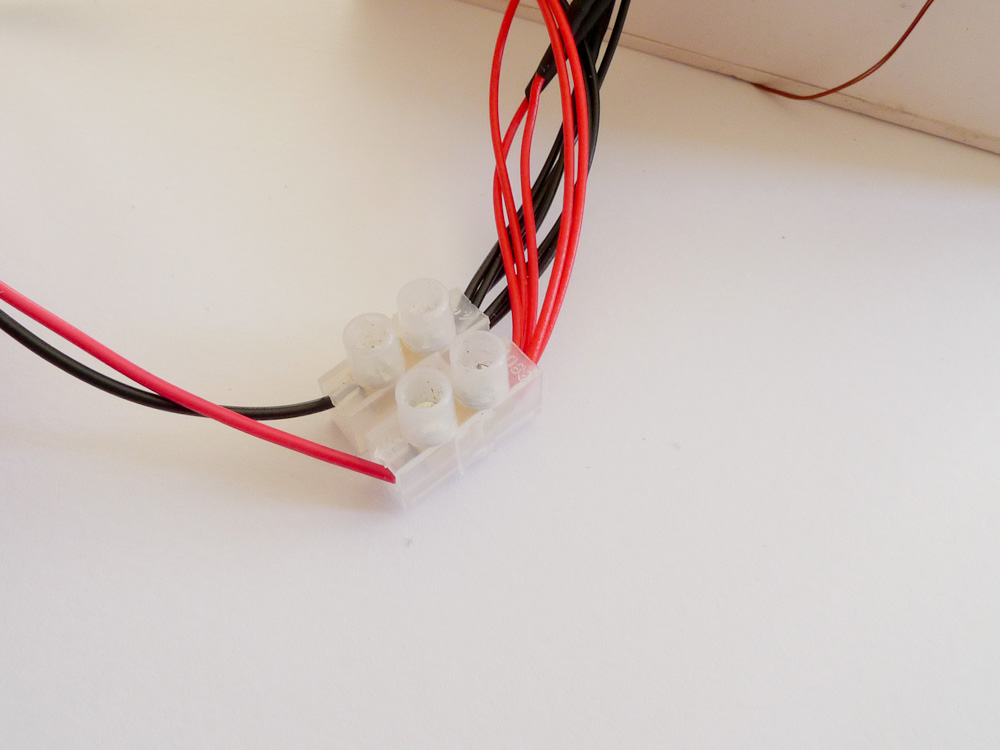FAQ's
A selection of common questions relating to using LEDs. You can also refer to LED Basics for additional information.
What do I need to buy?
This is a common question and it's pretty simple. All you need is:
- A power source - usually a battery box but could also be a mains transformer (a connector block is always included)
- Lights - in the form of LEDs (light emitting diodes) in the size and colour to suit your project / model
If you buy one of the kits then everything you need is provided. Battery box, connectors and lights are all included. If you make up your own kit then you will need to choose these.
What voltage do I need?
It's a common misconception that if you use a higher voltage that the LEDs will be brighter. LEDs are the same brightness regardless of the voltage, it's the resistor that controls the brightness and this is determined by the current flowing through the LED. A minimum resistor value is required to protect the LED on any voltage but after that, if you want to use a larger resistor than required then the LED will be dimmer.
I choose resistor values to suit model making requirements as best as possible as LEDs can be too bright if at full brightness. If you need a dim LED then just let me know.
So, to answer the question, I usually recommend 3v for most projects as it's a small battery size and reasonable bang for your buck. If you are using specific LEDs or LED strips then the voltage is set by those, eg 5v LED strips require a 4.5v battery box or 5v transformer; 12v LED strips need a 12v battery box or 12v transformer.
What size of LED do I need?
LEDs come in a vast array of sizes and various shapes from smaller than a pin head to standard sized bulbs in your home. For the purposes of model making I choose the most suitable sizes and what size you choose really depends on the size of your model and the parts it has.
For small figures like Warhammer/Table Top soldiers then nano LEDs are great.
For cars and vehicles it can range from chip LEDs through to 5mm LEDs.
This is one question that requires thinking about your model and if necessary an email to myself and I'll advise on the best options.
What's the difference between chip SMD LEDs and Standard LEDs?
SMD or chip LEDs are designed for printed circuit boards but they can be wired to be used in models to great effect. They are generally very small, some are smaller than a pin head up to ones that are 5mm square and they are super bright for their size with a very wide angle of light spread.
Standard LEDs look like a bulb with two 'legs' sticking out. These have wires soldered onto them. They come in a round top or a flat top/wide angle versions the round top being more like a spot light with generally a 60 degree light spread. The wide angle LEDs have a more diffuse light output and a wider light spread, more like a chip LED, but less bright due to the diffuse nature of the light.
They are in standard sizes: 1.8mm dia, 3mm, 5mm, 10mm being the most common.
What is the difference between pre-wired LEDs and packs of LEDs?
Pre-wired LEDs come as a complete package. They are wired up ready for use with a resistor on the wire so all you need to do is install in the model and connect it to the battery box.
Packs of LEDs are just the LED itself, with separate resistors but you will need to solder wires and the resistor on yourself. You will need wire and heat shrink tubing in addition to the pack of LEDs. The heat shrink tubing goes over the solder connections to prevent short circuits (where positive and negative touch, thus shorting out).
Instructions are provided but some knowledge of soldering and using LEDs is useful.
Flashing and Flickering LEDs - will there be carryover of flash to static LEDs?
If you are using a 3v coin cell battery, due to the battery chemistry, as the battery runs down it's very likely that any static LEDs on the same battery as the flashing or flickering LED(s) will also flash or flicker. This is called carryover.
However, I have never seen this happen with larger AAA's batteries. With those the flashing or flickering LEDs flash/flicker and the static LEDs are static.
Should I use a coin cell battery holder or AAA's?
I always recommend an AAA sized battery box if you have space inside your model. This is because the batteries are far more powerful than a 3v coin cell with a much higher mAh capacity (2400mAh compared to 200mA for a coin cell, approx).
This allows you to run more LEDs from the AAA battery box and they will be brighter. They are far more economical for the cost.
However, 3v coin cell batteries have their uses and are ideal for where you need a very small battery, such as in small models like Warhammer 40k, small vehicles etc. I generally only recommend them up to a maximum of 5 LEDs because the brightness really starts to drop off over this number.
Coin cells also don't cope as well with different colours of LEDs like white with red or blue with yellow, due to the different voltages required to power the different colours of LED. What you can find is that when the battery runs down, only the lower voltage red and yellow LEDs will be lit and the white or blue will be either very dim or not light at all. A fresh battery solves the problem.
So in the end it's down to the size of the model and the number of LEDs you want to use.
How do I connect up the LEDs?
It is very simple to connect LEDs to the power supply and it is always the same, whether you are using a battery box or a transformer. The LED(s) are polarity dependant so if you connect them up the wrong way, they don't work. They have a positive and a negative and unless you order white wire, this will be red and black wire, red for positive and black for negative.
All you need to do is connect the red wire(s) to the red wire of the battery box / positive of the power supply and the black wire(s) to the black wire of the battery box / negative of the power supply.
See image below for a simple setup using a single LED and a coin cell battery holder via a small connector block.

If you have multiple LEDs, you just twist all the red wires together and all the black wires together.

If you have chosen to purchase the LEDs with white twin core wire, on LED strips for example, the positive wire will be the longest. With standard LEDs and white standard wire the positive is the wire with the resistor on - a small bump under white heat shrink tubing, near the end of the wire.
Should I use Fibre Optics?
Fibre optics are a great way of lighting certain elements in models, but it's a common misconception that they can act as a bright light source, just like an LED. End emitting fibre optics transmit light along their length, so what you put in at one end, comes out of the other, but it is not as bright as an LED. This may be different in commercial settings where very large light sources can be used, but for model making, using standard LEDs, they are not as bright as the LED itself.
The light is also restrained by the size of the fibre optic, which is often quite small.
Ideal uses for fibre optics include:
- Star field for a background or ceiling in a room box or diorama
- Buttons in cockpits, Sci-Fi models, Wargaming vehicles, a light in a visor or eyepiece etc
- Windows in smaller models like a Star Wars Star Destroyer for example
- Flashing buttons
They are great for tight spaces where you can get 10 lights from 1 LED, but the thicker the fibre optic is, the less flexible it is, so this should be considered. 0.25mm fibre optic can be bent almost back on itself whereas 2.0mm is very stiff and can't be bent much at all.
It is also worth noting that superglue makes fibre optic brittle so should never be used. Slightly cooled hot melt glue, 2 part epoxy and PVA glues are all suitable.
